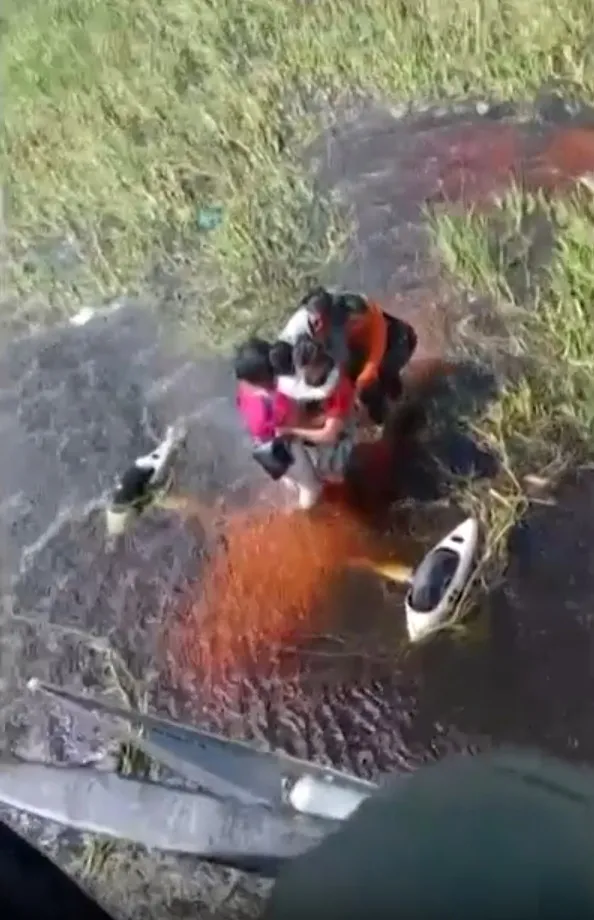TRINIDAD, Bolivia — Five people, including a young child, miraculously survived a plane crash and endured 36 terrifying hours in an alligator-infested swamp deep within the Amazon rainforest before being rescued by authorities.

The small aircraft, en route from Baures to Trinidad in northeastern Bolivia, was forced to make an emergency landing over the Itanomas River after experiencing sudden engine failure. Upon impact, the plane flipped in the murky waters, thrusting its occupants into immediate danger—not only from drowning but also from the lurking predators that dominate the swamp.
Pilot Pablo Andrés Velarde, 29, recounted the harrowing ordeal that followed. Alongside three women and a child, Velarde was able to escape the partially submerged wreckage and cling to the upturned belly of the aircraft, which floated precariously in the water. The group remained stranded in the dense, isolated region for a day and a half, surrounded by what Velarde described as “huge” alligators that came within 10 feet of them.
“We saw an anaconda circling the area and the alligators never left us alone. They stayed close all night,” Velarde told local media. He believes it was the smell of leaking aviation fuel from the wreck that may have deterred the predators from attacking.
With limited resources on board due to the short-haul nature of the flight, the survivors had no drinking water and only cassava flour to sustain themselves—salvaged hastily from the plane’s cabin. As night fell on their second day stranded, they resorted to using their cell phones as makeshift torches to keep predators at bay and to signal for help.

Fortune struck when they heard the distant hum of a fishing boat. Velarde used the last of his phone’s battery to flash a signal at the vessel’s crew, who quickly contacted emergency responders. Bolivian authorities launched a swift rescue operation, airlifting the group to safety via helicopter. Dramatic aerial footage captured the survivors huddled together on the battered fuselage, visibly fatigued but alive.
“They were all in excellent condition considering what they endured,” said Wilson Ávila, head of the Beni Department’s emergency operations center. Health officials, including regional director Rubén Torres, praised the rapid response team and confirmed that none of the survivors sustained life-threatening injuries.
Reflecting on the trauma, Velarde admitted the group would not have survived another night. “We were exhausted and couldn’t remain standing anymore. But we had to stay alert for the animals,” he said. He added that mechanical failure left him with no viable landing zone, forcing him to ditch the plane into a swamp near a lagoon in one of Bolivia’s most treacherous environments.
The crash has since prompted speculation, with authorities probing the cause of the engine failure and whether the aircraft met all operational standards. For now, though, the story is one of survival—against nature, fatigue, and time—in the heart of one of the world’s most unforgiving regions.



